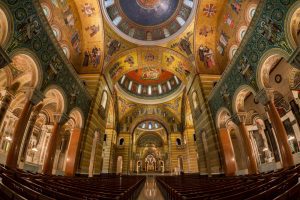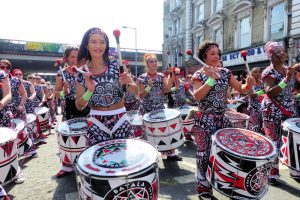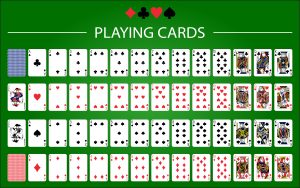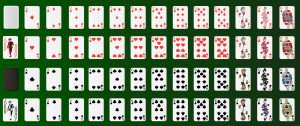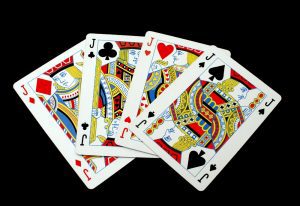Organ music is played with an organ. This classical music instrument is made out of a keyboard connected to a series of pipes for each of its keys to produce tones. Organ players use their hands and feet to play the instrument, similar to playing the piano.
Over the years, the organ has been used for all types of music, predominantly in the Catholic church where it was perfected. But there are all types of music played with this instrument.
Table of Contents
1. Chamber organ music
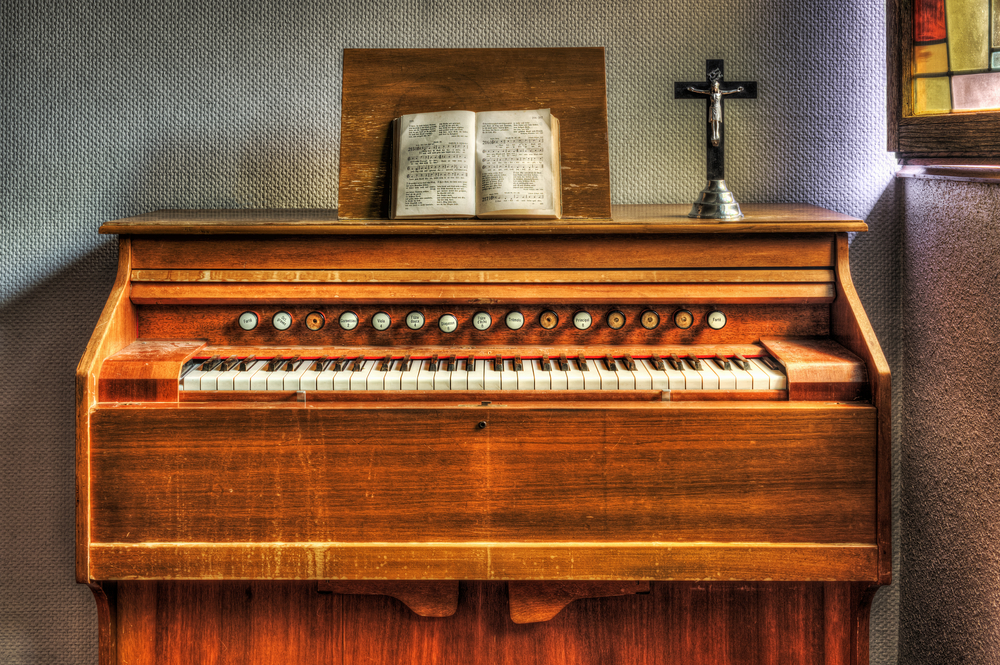
Chamber organ music is played with a chamber organ. This is the smallest type of organ currently in use today. Some critics argue this isn’t a type of organ at all while others say it still represents the classic organ well, but on a smaller scale.
Chamber organs are made according to all of the principles of a large organ used in concerts. It has the same pipes’ system as a large organ. Due to their limited size, chamber organs typically have fewer keys. Some of the best chamber organs today are found in small churches, castles, and a few are custom-made for home use.
Since they are smaller, these types of organs are used in private concerts or as learning tools. Those who want to practice organ music typically purchase a chamber organ to learn on at home. But some of the most notable chamber concerts around the world also use the chamber organ as part of an orchestra, vocal group, or as the main musical instrument.
Most music fans know the limitations of chamber organ music. Many of these small instruments don’t have separate pedals and the number of keys of grand pipe organs.
Chamber organ music is typically played with other instruments. The chamber organ is used here as a continuo music instrument. This type of role is used to offer a baseline or a note for progression. A longer chamber organ note is used as a baseline for the other instruments of the repertoire.
Most of those who play a large grand organ can also play a chamber organ. But those who only play a chamber organ might need more time to accommodate a large grand organ, mainly as they need to use more keys and their feet as well.
2. Church organs music
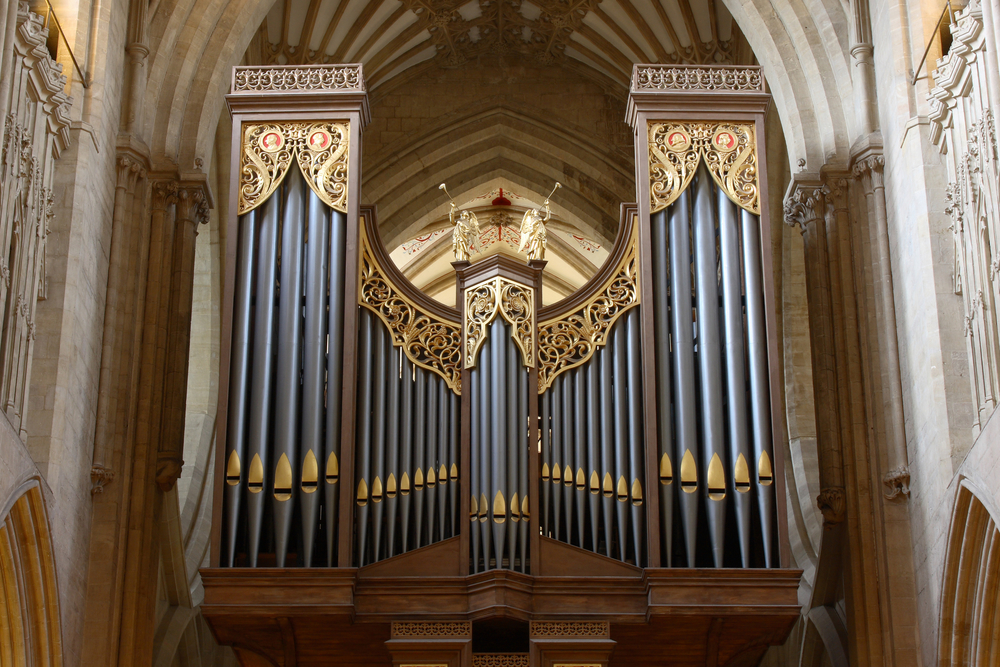
Church organ music remains the most popular type of music played with this instrument. The largest and most impressive organs are still found in churches around the world. The Boardwalk Hall Auditorium Organ is the largest in the world.
This organ has been made with a complex system of pipes and at the time of its creation in 1929, it revolutionized the amount of work believed needed to create a church organ. It has more than 33.000 pipes which took years to assemble and perfect.
Church organ music is characteristic of Western Christianity. Musical instruments were rarely used in the initial Christian church. It was Pope Vitalian who added the organ to church music in the 7th century in the Catholic Church. This was soon followed by most Western European Christian churches who adopted the musical instrument for Christian worship.
Organs are typically played in the Divine Liturgy or the Sunday service in churches with such instruments. It’s also played on services held throughout the week and at special concerts such as Christmas concerts.
These church organs are typically played by a single person, typically employed by the church or a volunteer. Since organs are so different from one church to another, they can sound completely different.
Most church organ music is played on organs with steel pipes. Some smaller churches still use organs with wooden pipes. For acoustics purposes, church organ music sounds the best. These organs are typically installed at the back of a church in the place with the best acoustics. This is why even a small church organ can sound richer and louder than other organs such as the classic organ of the digital organ.
Church organ music is mainly used according to a set repertoire, often composed by classic music composers. This repertoire is typically different between various Christian denominations such as the Catholic Church and the Anglican Church.
One of the main historic criticisms of organ music in Churches came from Eastern Christianity and the lack of uniformity in the repertoire was one of the main arguments of the criticism.
But church organ music evolved considerably since the 7th century. Today, church organs and churches are also used to play non-church music. Various concerts are held in famous cathedrals that have nothing to do with church music at all. Large cities with a strong catholic presence and large organs such as those in Berlin, Wien, and Los Angeles regularly hold various classical music concerts specifically for their impressive acoustics and their large grand organs.
Some reformed Christian Churches also play digital organs in their services today. Protestant churches rarely use grand organs as they choose electric organs as the main musical instrument.
Since the main music repertoires of organ church music come from classic music, it becomes harder and harder to draw a line between church music and classic music. They intersect most of the time and classic tunes are played across the world as part of the church service.
Types of church organ music
When can you hear an organ playing in the church? Most grand organs used in churches are used as a prelude at the beginning of the service and as a postlude as people walk out of the church. These are the best times to listen to this type of music.
Another popular moment church organ music is played is at the beginning of weddings. According to Catholic tradition, church organ music is played as the bride enters the church making her way down to the altar to an awaiting groom.
The Bridal Chorus was composed by Richard Wagner in the Lohengrin opera play. It is the most traditional wedding entrance organ music and the most popular type of church music heard today. It still comes as a direct interpretation of classical music inspired by theatre music.
Some of the oldest organs in the world are found in churches of Switzerland, Germany, and the US. Many of them were custom-made for churches and their sizes only allow them to be used in such large buildings. Other church organs have been acquired in the late 1970s. At this time, thousands of cinemas and theatres across the world were selling their large organs to make room for new cinema technologies. Those who bought these organs in large numbers were typically churches. Over 5.000 organs were sold via this route in the US alone.
3. Classic organ music
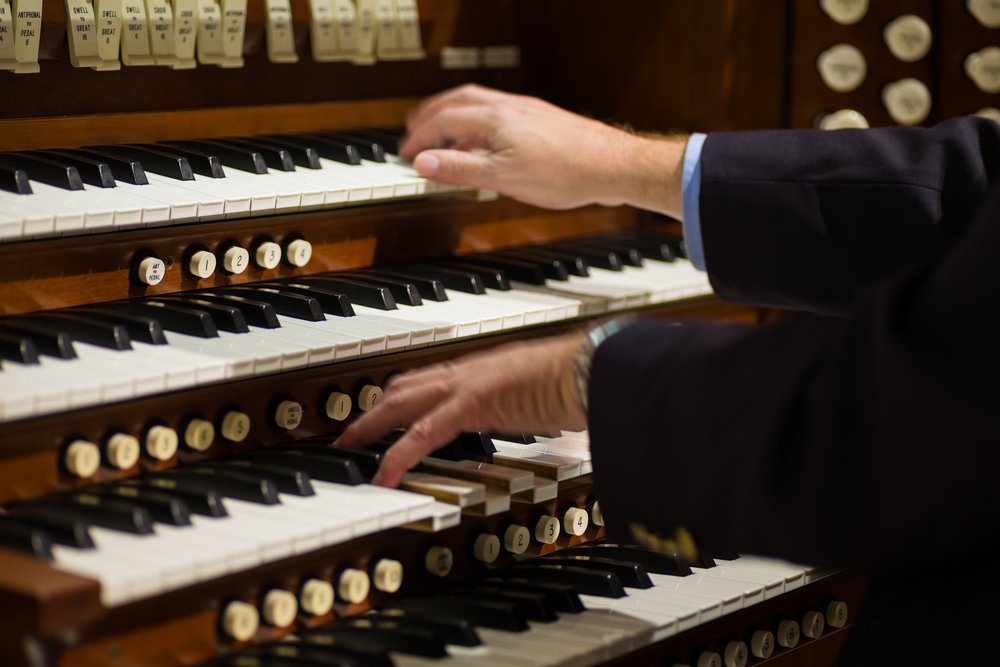
Classic organ music used to be important. There was a time (mainly pre-Bach) up to 1750 when the organ music was part of a much wider group of instruments routinely played in classic music.
Some of the most important musicians to have played classic organ music include Antonio de Cabezon and Giorlamo Frescobaldi. They come from countries where classic organ music used to be prominent. Italy, Spain, and Germany were the pioneers of organ classic music.
The French classical school soon followed in the footsteps of these countries to offer some of the greatest organ composers to have ever lived. The fact that organs were so popular and available in these countries also helped the composers play these instruments frequently.
What happened after Bach’s death to the organ? It began to lose its appeal and it started to fade out of new classic music repertoires. The advent of the piano made the organ a bit more difficult to justify. Pianos were smaller and cheaper and they were also easier to transport.
The 19th century started to show a rebirth of the organ musical instrument in classic music. French composers were some of those behind the popularization of this instrument in classic music. It was the creation of many affordable chamber organs that led to its return to the mainstream classical music scene.
A new current of improvisation was also seen in this century. Organs are great instruments for music improvisation and they represent one of the most interesting instruments in classic music composition through improvisation.
One of the most prominent classic organ musicians and composers in history was Marcel Dupre. The French national impacted the revival of the organ classic music of the 19th century through his example. He began composing many songs and he also made an impact in the pedagogical side of classic music learning organic music teachers how to present the instrument before students.
But it was the international recognition of Dupre that made that impacted classic organ music the most. Some say he held thousands of concerts across the world. Today, there are over 2.000 recognized Marcel Dupre classic organ music across the world.
The French composer went on to play classic organ music across Europe, Australia, and the United States. He also had a major impact on how we see the classic organ today pioneering all types of small instrument tweaks and changes to make it sound better and to also make the musical instrument easier to play.
4. Digital organ music
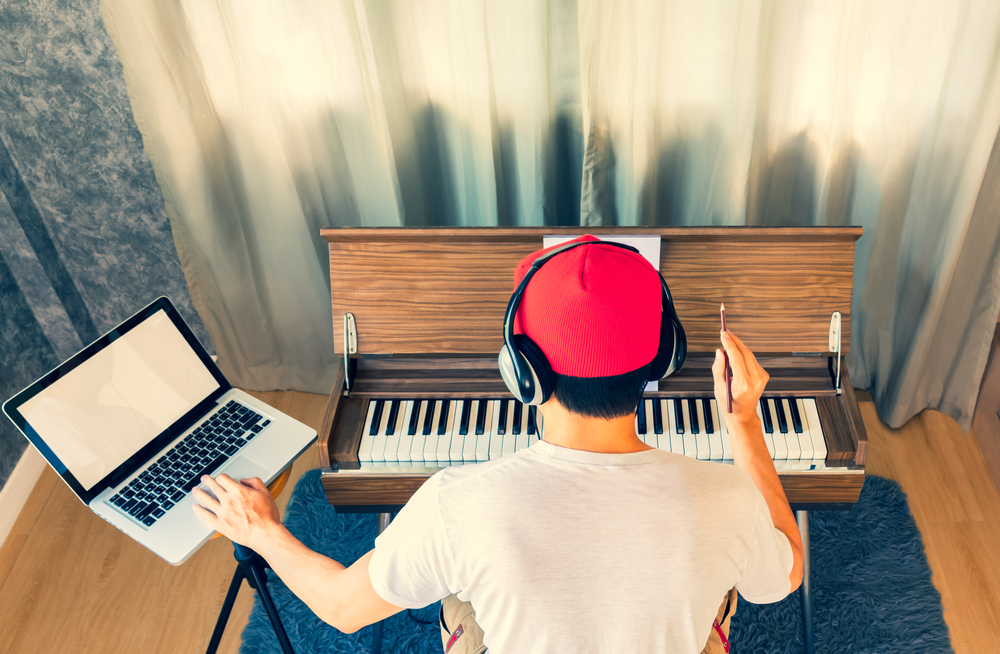
The digital organ is used to create digital organ music. This type of music refers to all of the organ types of music which include jazz, rock, and church music. It has its category as digital organ music is said to have a different sound to real pipe organ music. Some argue this isn’t the case.
Digital organs have revolutionized how organs are used today. They use a set of pre-recorded pipe organ sounds or they are connected to real pipes to produce the organ sound. Digital organ music is typically upbeat through technological advancement but it is still used in a reduced percentage compared to most other types of instruments.
One of the major reasons to reinvent the grand organ was its high maintenance cost. Even for churches, maintaining a classic organ came with high costs. Diminishing congregation numbers have led church administrators to look elsewhere. Digital organs are smaller and they are cost-efficient. Repairing and maintaining these instruments is also a lot cheaper compared to a classic organ.
One of the main effects of the launch of the digital organ was its inclusion in popular music genres. This includes jazz, rock, and pop music. The instrument is not as popular today as it was replaced with the more cost-effect and space-saving electronic keyboard.
Many people confuse the digital organ with an electronic keyboard. But the sound and look differently. Most types of electronic keyboards can also reproduce the sound of a digital keyboard to a large extent. They are also easier to travel with.
This is the main reason the electronic keyboard is widely used in almost all types of music. Pop and rock music have used the digital keyboard. You can even hear the digital keyboard in music genres such as drum and bass, dubstep, and hip hop today.
Still, some of the most complex digital orang music can be heard in churches and concerts today. Digital organ music is also heard in the music improvisation space. Both students and music players are interested in improvisation and given their reduced sizes, digital organs are perfect for practicing improvisation.
5. Jazz organs music
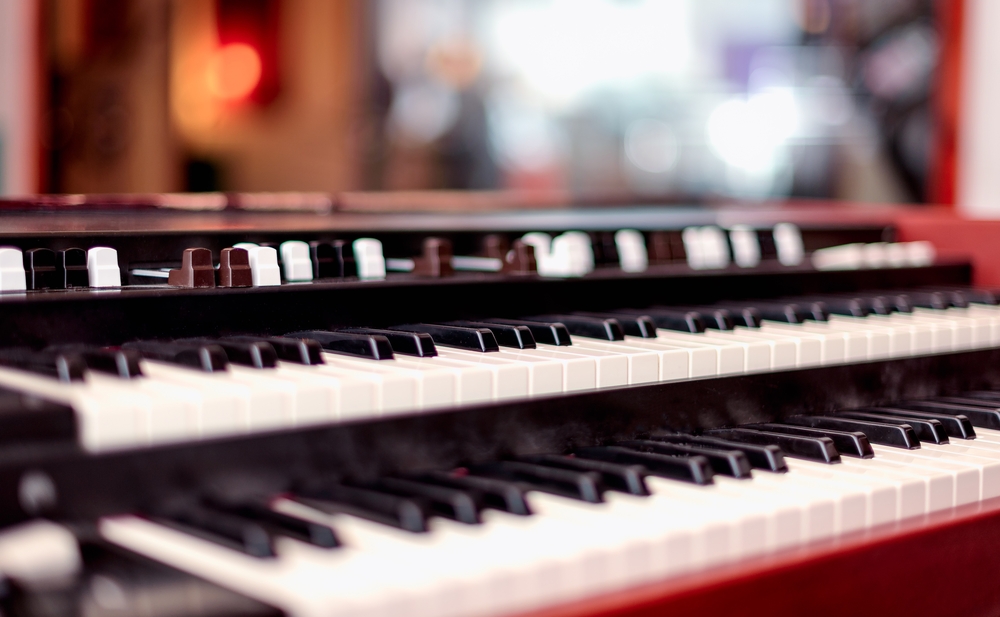
Jazz organ music originates in the black communities of the US. It has been a very popular type of music in the 1950s and the 1960s. Soul jazz was the most important type of organ music in jazz during this time, and probably forever.
Jazz music of this era incorporated elements of gospel, blues, and rhythm blues. While this type of music is still created and played today, it was during those times that almost any restaurant and bar had live bands that touched base with this style of music.
While there is no clear data as to why this type of instrument caught on in the jazz communities of the Afro-Americans, it is believed it’s the openness of the community to the organ in general that opened the doors for it in jazz.
The organ was widely used in black Christian churches even outside the typical Sunday service. These communities played the organ on almost any church occasion and even outside at various events such as weddings. This is why it is believed the organ was seen as a popular musical instrument that the white communities did not easily embrace outside of the church.
The gospel organ influence in jazz was visible, however. This is why it was one of the main influences of jazz music in a time where composer and improvisation were very popular in the Southern parts of the US.
But even jazz organ music can be divided further by types and influences. One of the most interesting types of jazz organ music was the organ trio. As its name suggests, this type of music was played by 3 musicians and an organist was one of them. The other two musicians were a jazz guitarist or a saxophonist and a drummer.
Hammond organists were popular in these trios. It’s these bands that managed to bring R&B influences to jazz and they enjoyed impressive success up to the late ‘60s. From this point onwards, the organ’s influence in jazz started to diminish, but it never went away completely.
One of the major reasons why the organ was so popular in bars, a medium very different to the typical gospel music of the organ, was because it was a good musical instrument for improvisation. It can be seen as one of the best tools for improvisation along with the saxophone and the classic drums.
The Hammond organ never went away from organ jazz. But it changed dramatically in modern times. If the ‘70s saw a type of organ jazz similar to the one in the ‘50s, modern times offer a new type of organ jazz musicians, often on the border of experimental music.
One of the last great Hammond organ artists was Jimmy Oscar Smith. He used to play in bars and restaurants but he also recorded jazz music frequently. Today, organ jazz music survives sporadically, mainly outside pop music. Bands such as Danish Ibrahim Electric use electric organs to create jazz music, largely by attributes of improvisation.
All of these jazz bands maintain rather experimental jazz organ music. It represents one of the most hybrid types of music today. When everybody believed this style of music was going to become more and more popular in the ‘90s, it was the jazz-rock fusion emergence that truly prevented this type of music to develop further into a more popular genre.
6. Movie and theatre organ music
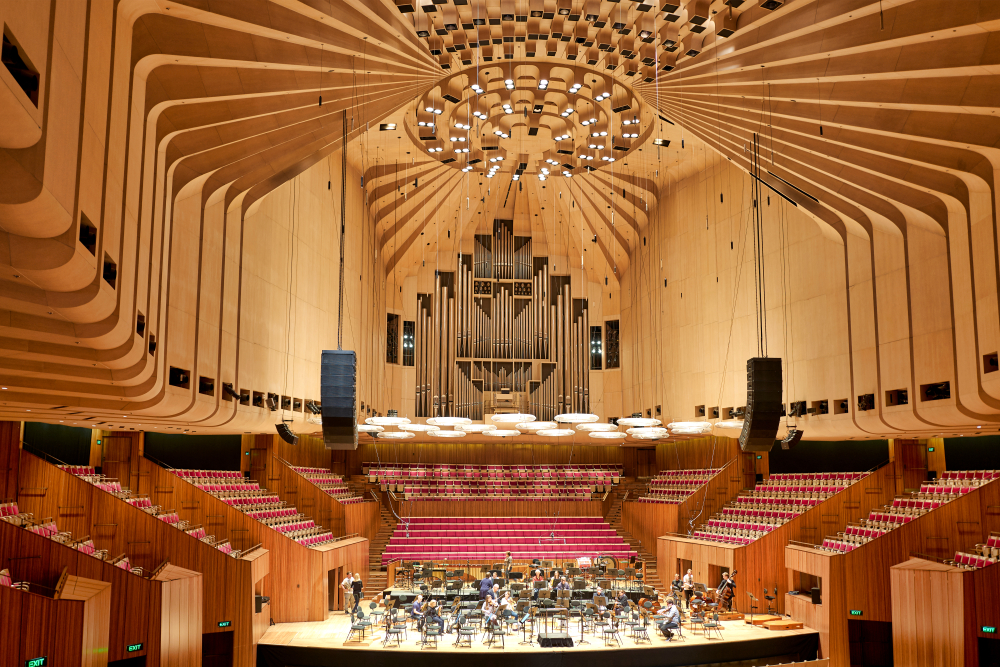
Orangs have been used to create music for movies and theatres. Surprisingly, they are still used in some of the world’s most recognized theatres for ambiance music even today. Both small and grand organs are in use today but there was a time when these musical instruments were the only instruments used in the entertainment industry.
Organs in movies
Organ music made its debut in cinemas in the early 20th century. The first 2-3 decades of the century marked the advent of the movie industry and orangs became a much-appreciated musical instrument as images were first recorded without sound. Movies had no audio track and no technical audio recording capabilities were discovered at this time.
As a result, organ music was largely used in cinemas to create an ambiance and to prevent people from getting bored in cinemas. At one point, these musical instruments were also used in-between movies to create a special place where people could socialize and eventually stay for another movie.
Music in movies was generally inspired by classic plays and theatre plays. Improvisation also has a large impact in movies as musicians sometimes needed to play hours at a time on movie screening days.
Organs were also popular musical instruments in cartoons. Many cartoons use musical instruments to create an ambiance as they often show animals and other creatures without speech. Organs, guitars, drums, and flutes are some of the most popular music instruments used in old and new cartoons.
Organs in theatres
Organs made their way to theatres at the same time as cinemas. Theatres were different as they could control the entire set with actors, voices, costumes, and settings. The added value of organ music was indeed perceived differently than in cinemas. As proof of this better approval by the public, we can still find organ music in theatres across the world.
Research shows that there were 7.000 organists employed in US theatres in the 1920s and the 1930s. Most of these had full-time jobs and their role was to play organ music in all theatre plays. Wurlitzer organs were mostly used by these theatres. The company made nearly 3.000 theatre organs during this period being the most important organ manufacturer of the period. Some of its organs have been restored and the play music even today. Smaller brand organs were also used in the US during this time.
After this golden era, organs started to diminish in popularity. Most theatre organs in the US and Europe were sold to churches and private individuals. Only about a quarter of these organs remain in the possession of theatres and cinemas and certain US organizations were established to bring them back.
The result of these campaigns helped organ theatre music survive to this day. You can hear live theatre organ music in places such as the Byrd Theater in Richmond Virginia. The Mighty Wurlitzer organ has been restored here and it plays live music every Saturday.
Virtual theatre organ music can be the future for theatre organ music. These organs are smaller and they can fit in small theatres. They are also very easy to operate and repair. Companies such as Walker Theatre Organs are responsible for this small revolution.
The company’s products have already started to replace classic organs in theatres. They have been made with MIDI keyboards which means many musicians are already familiar with their operation from digital keyboard music.
However, there are only a handful of theatre organ musicians employed today. Most of them are in the United States. The United Kingdom follows with a smaller number of theatre organ musicians employed either full time or part-time. To a lesser extent, theatres in France and Germany also employ organ musicians.
7. Pop organ music
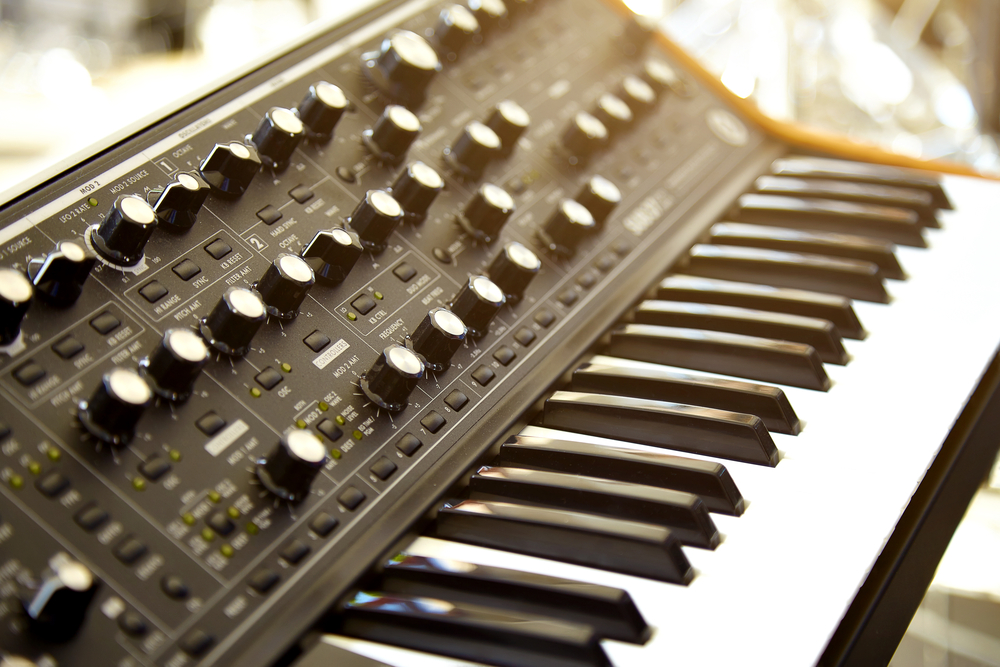
Pop organ music is a rare sight today. However, this type of organ music exists in the rows of experimental music and it can be an alternative type of music instrument distinguishable among similar others.
Organs are considerably more popular in rock music, but they’re still used by a few pop artists. Among them, Anna von Hausswolff is experimenting with this stereotypical church musical instrument. The Swedish artist is among the few who uses the organ in almost all of her songs which goes to show the instrument can be adapted to modern pop music.
Speaking about musical instruments, many artists see it completely different than those outside the phenomenon. They don’t see a rebirth of organ pop music as they didn’t consider it popular even in its golden era. This is why most music artists are using the instrument as a means of expression rather than as a glimpse into music history.
Pop music has its roots in the 1950s. At this time, the organ was as already as its peak popularity. But the instrument wasn’t the first to be chosen by pop artists and bands. The industrial revolution changes musical instruments forever. At the same time, the organ and other detailed objects were considered the most complex human creations. The complex also means difficult to create and expensive to purchase.
As a result, pop music never truly accepted the organ as an instrument to create music. This is even more interesting since rock music was initially seen as part of pop music and we’ve seen multiple organ rock bands over the decades.
Since its humble beginnings, the organ was an instrument that was rather too niched for pop music. Today, most pop music organ artists typically use small organs, similar to chamber organs due to their low cost and easy maintenance.
8. Rock organ music
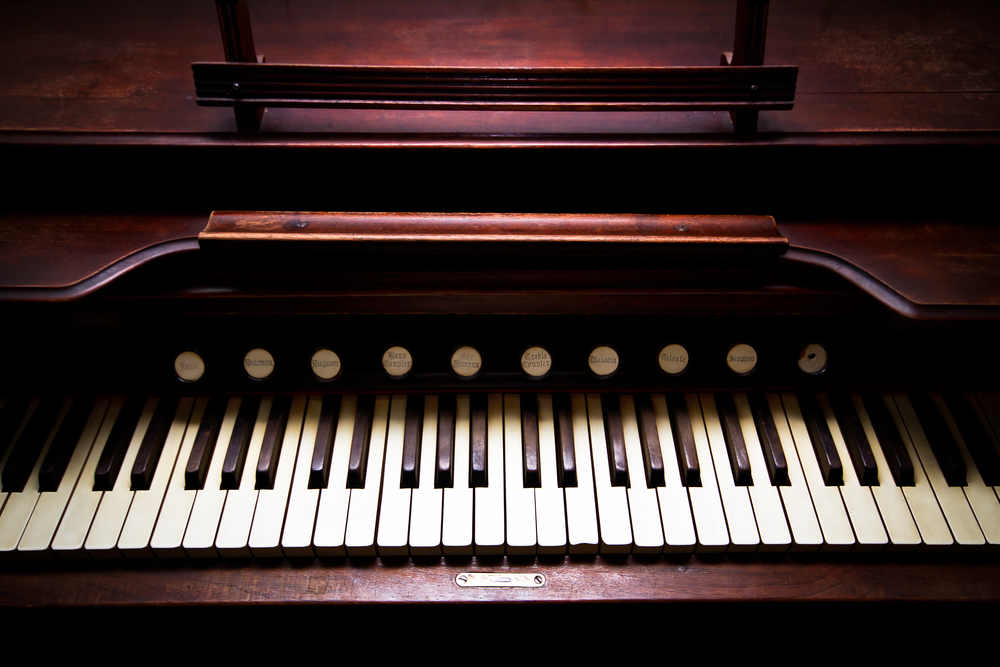
The Hammond organ has made history in rock music. Some of the best rock bands of all time have used this complex instrument to create some of the most memorable rock songs. Steve Winwood, Garth Hudson, Procol Harum, and Deep Purple are just a few of the memorable early rock bands that used the organ, specifically the Hammond B-3 in their successful rock songs.
The bands were are rooted in the influences of the ‘60s, a period when the classic organ was highly appreciated outside its gospel music role. This type of organ remained the most popular choice for rock artists for at least a decade.
Even modern rock bands take inspiration from these early bands with electronic organs. While the B-3 was out of production by the late ‘70s, the instrument also faded out of the main rock scene until 2002. It’s this year that marks the recreation of the famous Hammond B-3 and it was the best time for rock bands to get their hands on the classic instrument.
One of the biggest concerns of those trying to emulate the sound of the classic B-3 was its natural tones. Some of the artists of the moment said the organ even sounded close to the human voice and this is why they integrated it so easily into their repertoire. Surprisingly, the new B-3 was a success and even some of its most acid critics had to recognize its success.
The main reasons why the organ was abandoned as a rock music instrument
From extreme popularity to barely being heard in rock music, the organ had a steep descent into oblivion. The instrument had a periodic revival in the ‘90s when rock bands wanted to recreate that classic rock band style and since 2002, but these weren’t important trends in organ rock music rather than sporadic glimpses of hope. Here are the 3 main reasons why the organ eventually disappeared even before it was put out of production.
Added sounds variety with synthesized keyboards
The appearance of synthesized keyboards came with a greater sound profile. Multiple tones were achieved with these keyboards and for this reason, most rock bands turned to it in favor of the organ.
While the organ did have a natural sound, especially the ones with pipes, the music instrument was simply not as complex as a synthesized keyboard. With more variety waiting behind the corner, most rock bands of the early ‘70s were already looking for ways to stand out/
Portability was key
The synthesized keyboard was easier to carry. Rock bands of the era were always traveling to greet their fans at various concerts and live music events. This is where the high resources needed to carry even a small organ proved too expensive.
Alternatives weren’t many at the time. But the synthesized keyboard was just the music instrument these bands were waiting for to reduce music production costs. Most bands sold their old organs and they chose a more portable synthesized keyboard. Early choices included the Mellotron or the Moogs. By the early ‘80s, most rock bands already forgot about the organ and they all choose Yamaha keyboards for their excellent sound profile and high portability. These Yamahas were also considered affordable for their versatility.
A changing rock scene
Rock music evolved rather quickly. Even today, rock music seems to be fading out from the mass appeal types of music as tastes change rather quickly. The classic rock bands are interesting to listen to but the need for something new is visible in rock music.
This is why many rock bands eventually had to change their music style. In the early ‘90s, rock music was already very different with all of its sub-genres. Two decades later, rock music is still drifting and trying to find some form of identity in a world where it isn’t considered as popular as it should be. Some rock bands aren’t even interested in mainstream appeal. For the organ and most other instruments apart from drums and guitars, this can mean the end is in sight as well.
9. Sports organs music

Sport is an area where organ music is still going strong. You can hear various types of organ tunes and songs in sports such as basketball. Heard at large sporting events, the organ is an instrument used to keep crowds entertained. Even before the organ, sporting events used various musical instruments to entertain the crowds. It’s estimated music and sports go hand in hand for thousands of years. A few sports, particularly in the US, are known for using organs today.
Organ music in basketball
Basketball is perhaps the most popular sport for playing the organ. This musical instrument has been largely popular across the NBA, the first basketball league in the US. The organ can play music before the game, after the game, and during break periods.
But most people know the organ as an instrument that signals scoring or a certain way to encourage a team. An organ is played when crowds shout ‘defense’ or ‘charge.
LA Lakers is one of the NBA teams extensively using organs to hype up the crowds. The team uses various short tones played by an organ player during each game. Crowds know when to get behind their teams and organ music is as popular today as it was in the history of the team.
Organ music in baseball
Baseball is also a sport where organs are used by almost every major team. Major League in the US is the scene of organ music as a way to hype up and entertain the crowds. This type of musical instrument was first introduced back in 1941 in Chicago. It was at Wrigley Field that the organ was used as the sold music instrument to play music to the crowds.
It only took 2 decades for every team in Major League to get their organ, typically of a digital nature, to play for the home supporters. In time, every player even got a personal tune. Some teams even play these individual theme songs as players are presented to the crowds before a baseball game.
Teams such as the Washington Nationals have an employed organ player with a dedicated organ music playing room to entertain the crowds. This small room inside the stadium is seen across the Major League stadiums. Often made with retractable windows so that the organ player can hear the crowd’s reaction to the music, these small organ rooms are the biggest stage for organ music today.
The Nationals Park has a capacity of over 40.000 people. Its home crowd record of 45.996 people also makes it one of the places with the highest attendance of people to have heard an organ instrument in the state. Such scenes are seen across all large US cities with a team in baseball’s Major league.
Organists are typically employed by large baseball teams in the US to play different-size organs. Gary Pressy was the longest-running organ player in the country. He played for more than 30 years without missing a game which makes him one of the most experienced organ players of modern times.
Organ players are typically part of a baseball team or part of a certain stadium administration. It’s rare to see an organ musician play for multiple baseball teams as they are known for their dedication to a single team through their careers.
Organ music in hockey
Hockey might gather smaller crowds compared to baseball, but it also creates an impressive atmosphere, especially within its indoor grounds. Organs are used in hockey to play tunes, prompts, and even to interpret popular rock and pop songs at different games.
As in baseball, the hockey organ player sits close to the crowds, typically in a dedicated music room. Looking through a glass window, the organ player signals when the home fans need to encourage their team or when they need to shout certain directions for their team, such as ‘defense’.
One of the most popular hockey teams in the US to use live organ music for its home games is the New Jersey Devils. A dedicated organ musician is hired by the team to perform live music at every game.
Most organs used in the NHL are digital. Some teams invest in classic organs, but these prove too large and to expensive to repair. They use pre-recorded organ sounds and a lightweight keyboard to play various tunes. For most hockey fans, these musical instruments represent entertainment. Most teams have favorite tunes and songs played on organs and since hockey arenas are indoors, they create an impressive sports atmosphere.
Organ musicians at sporting events are also big improvisation fans. These musicians need to be able to adapt their songs in a matter of seconds, depending on the state of play. This is why only experienced organists get to play at these sporting events.
The general idea of sports in music is not new. Even before organs, other musical instruments were used to entertain the crowds. In Roman times and even in Ancient Greece, music was played in various sports. From the first editions of the Olympics, music was always tied to sports, particularly to important sporting events.
It is sports where the organ survives the most together with churches. While modern organs are far from the metal or wood piped organs of the ‘60s, the sound profile is there. Easy to use and highly affordable, organs are largely used in church music and sports music. Other types of music also still sporadically use organs but to a lesser extent. While organs are still seen in theatres and a few cinemas around the world, large crowds only hear this majestic instrument in churches, cathedrals, and stadiums.

